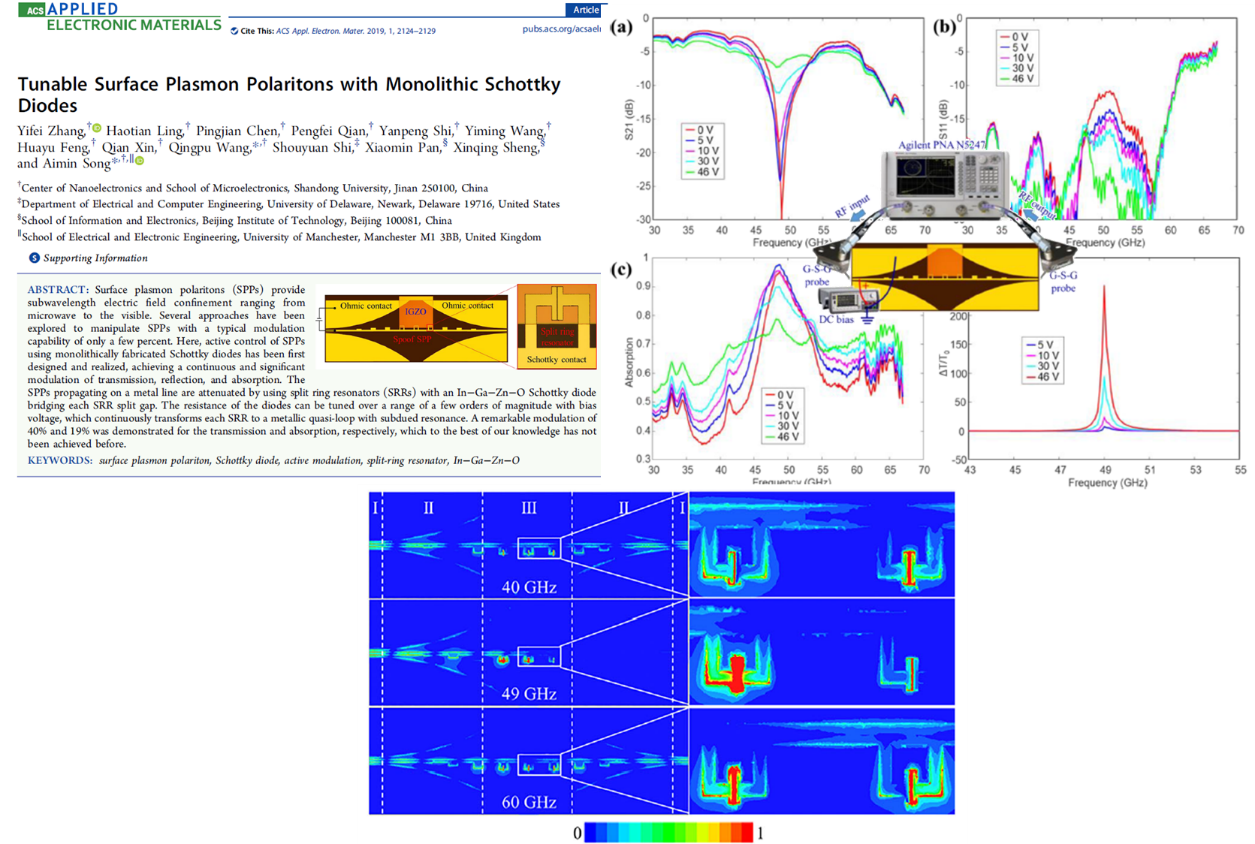Surface plasmon polaritons (SPPs) are propagating surface waves with highly confined electric field at the interface between two different materials with opposite permittivities.With the advantages of non-diffraction limit and strong electric field enhancement, SPPs have found many applications from microwave to optical frequencies,such as super-resolution imaging, miniaturized sensors,photovoltaics,miniaturized integrated circuits etc. Recently, planar and even conformal 2-D metallic line structures have also been proposed to transmit spoof SPPs at THz and microwave frequencies. Their advantages include not only conservation of the intrinsic properties of optical SPPs, e.g., non-diffraction limit, but also low propagation losses, high immunity to electromagnetic couplings, and simple integration with transmission lines, such as co-planar waveguides (CPWs). However, approaches of active manipulating THz SPPs are limited.

Dr. Zhang’s group monolithically fabricated Schottky diodes with a novel subwavelength SPP structure, which enables a significant modulation of transmission, reflection, and absorption for SPPs at millimeter wave frequencies. The proposed device consists of single split-ring resonators (SRRs) on a SPP waveguide and In-Ga-Zn-O (IGZO) Schottky diodes fabricated to bridge the SRR split gaps. The diode can actively tune the conductivity within the split gap so that the resonance magnitude of SRRs and the corresponding attenuation of SPPs are modulated. The characterized continuous modulation depth of transmission and absorption is 40% and 19% at 49 GHz, respectively, which is, to the best of our knowledge, the record for SPPs.
Paper list:
1.Y. Zhang, H. Ling, P. Chen, P. Qian, Y. Shi, Y. Wang, H. Feng, Q. Xin, Q. Wang*, S. Shi, X. Pan, X. Sheng, and A. Song*, Tunable Surface Plasmon Polaritons with Monolithic Schottky Diodes,ACS Appl. Electro. Mater., 1 (10), 2124-2129, 2019.
2.H. Ling,Y. Zhang*, P. Qian, P. Chen, Y. Shi, Y. Wang, Q. Xin, S. Huan, Q. Wang, and A. Song, Spoof surface plasmon polariton band‐stop filter with single‐loop split ring resonators,Int. J. RF Microw. Comput. Aided Eng., 30, 22267, 2020.